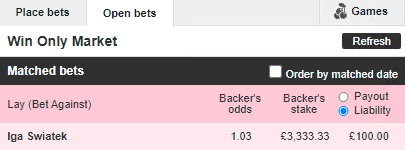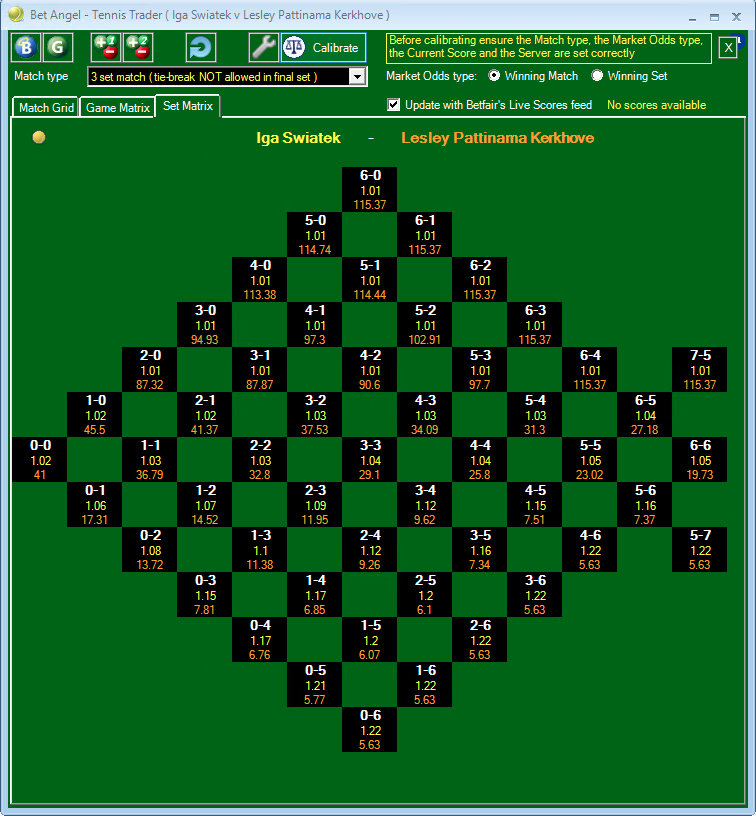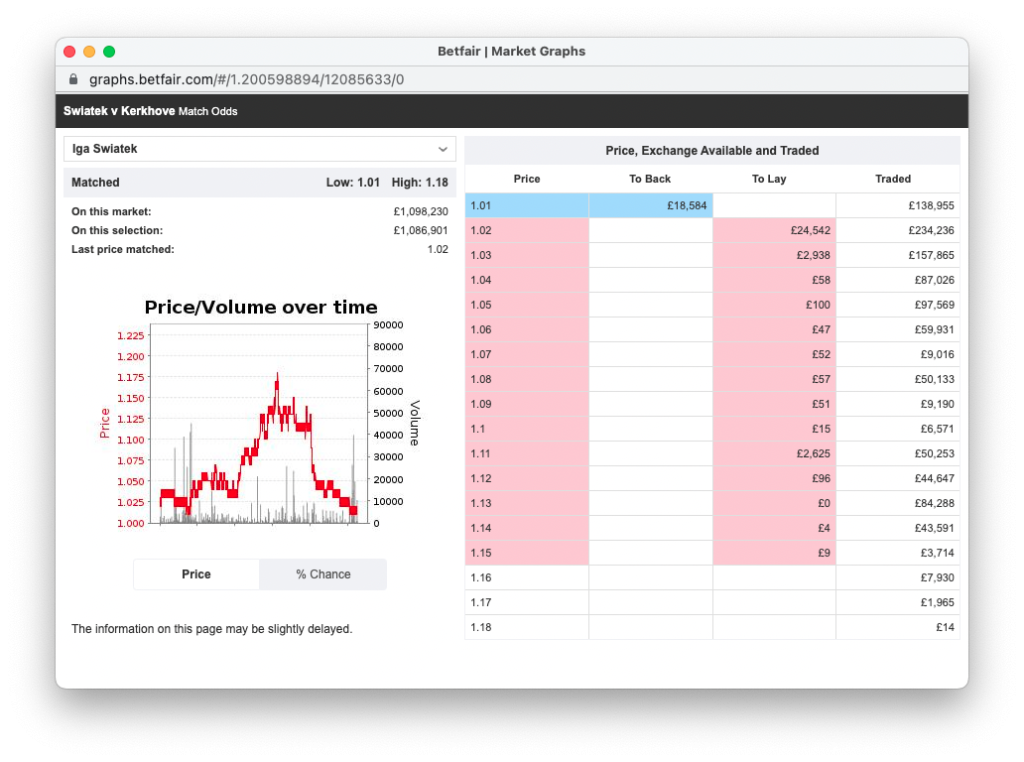How to trade early round Tennis Grand Slams
Why the opening rounds are a trader’s playground
Grand‑slam and tour events start with a parade of David‑versus‑Goliath encounters. The market knows Goliath should win, so it prices the favourite at comically short odds—often 1.05 or lower.
For a straight punter that’s a £50 risk for every £1 of profit. For a trader it’s a playground of low liability and huge upside.
When the price is that skinny, a lay‑first approach caps your downside at pennies in the pound while keeping the door open to three‑figure gains the moment momentum shifts.
A real‑world example: Iga Świątek
Let’s look at a typical example we often see in the early rounds. Tournament favourites don’t want to go overboard early on, so they try to do enough to win but not too much.

Świątek walked on court a 1.02 shot. Instead of dutifully backing her, we laid £3,333 at 1.03. Worst‑case liability? £100. Best‑case? A four‑figure payout if the upset materialised.

The outsider served first, pinched Świątek’s serve, and suddenly led 4–2. Odds drifted to 1.15—a 500 % move. We exited and banked roughly £340, locked in no matter who eventually lifted their arms in victory.
Key point: we never needed the underdog to win—only to wobble the narrative long enough for the market to re‑price the favourite.
Why tennis produces these spikes
- Serve breaks are seismic. One lost service game can swing implied probability by 10–15 %.
- Favourite psychology. Top seeds conserve energy early, flirting with danger before stepping on the accelerator.
- Short format (best‑of‑three for women). Less time for class to rise, more chance of early turbulence.
Timing the exit: hunt the break‑of‑serve
You do not need to guess the exact scoreline. What you need is the possibility of a break. The moment scoreboard pressure flips, traders rush to cover positions and the price gaps.
Using Bet Angel’s Tennis Trader
Fire it up pre‑match. Enter the current score and it will project the live odds for every plausible scenario. Set alerts or automation in Guardian so you’re poised to green‑up the instant your profit target appears on screen.

How often does the drift appear?
Historical data shows that roughly 70 % of favourites priced 1.05 or shorter trade higher in‑play before sealing the win. You won’t catch every move, and you will take the odd £100 hit, but the maths is on your side.

Rules of engagement
- Lay the ultra‑short favourite pre‑match. Keep stakes large enough to matter, but liability small enough to sleep at night.
- Cash‑out on the first meaningful drift. Do not let a winning trade revert to a straight punt.
- Walk away. Job done, banked, move to the next match.
Final thought
Early‑round mismatches look dull to spectators and back‑to‑win punters, yet they’re ideal for traders who understand price behaviour. With a disciplined lay‑first, cash‑out‑fast routine—and a little help from Tennis Trader—you can turn the sport’s predictable unpredictability into steady profit.
Ready to try it for yourself? Grab a free Bet Angel trial which includes the amazing Tennis Trader and put the strategy through its paces on the next tournament draw.
